What or where is home? Is it a place or a people, a feeling or a memory, a reality or a fantasy?
Those questions are at the heart of My Iran: Six Women Photographers, an exhibition on display at the Arthur M. Sackler Gallery in Washington, D.C., through Feb. 9, 2020. All the photos were collected separately by the Sackler Gallery, one of the Smithsonian Institution's Asian art museums, and came together only for this showing. Much of the photographers' work has been displayed previously in Europe but rarely in the United States.
My Iran showcases the works of six female Iranian photographers — Hengameh Golestan, Newsha Tavakolian, Shadi Ghadirian, Malekeh Nayiny, Gohar Dashti and Mitra Tabrizian — and their attempts to express the psychological condition of the Iranian people and state 40 years after the Islamic Revolution. At their heart, the works seek to capture the deep divides, geographic and philosophical, between Iranians at home and abroad.
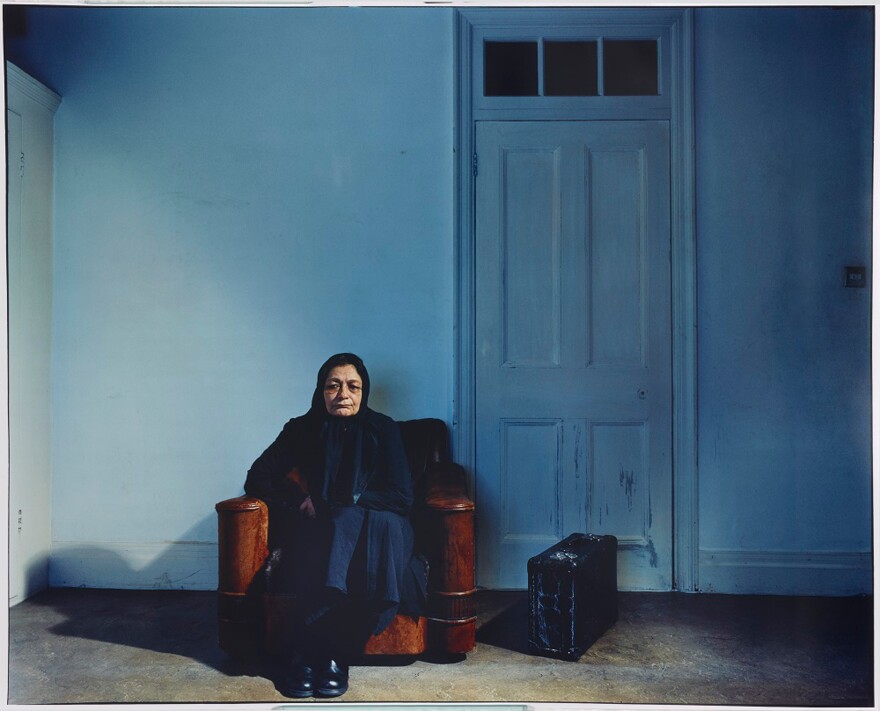
In the wake of the Islamic Revolution, many Iranians fled their homeland for a variety of reasons: their Western backgrounds or education, which were now suspect; liberals who opposed the Shah of Iran; men fleeing the draft for the Iran-Iraq War; women and children seeking greater opportunities outside the restrictive regime. However, just because they left does not mean they do not miss home.
"Those who live in Iran tend to idealize life in the West, and those who live outside long for 'home,' " Tabrizian says in one of the exhibition's captions. "But what both groups have in common is the will to survive."
Some of the first images in the show are meant to invite you into this head space. The first is a video created by Tavakolian, a 38-year-old Iranian-based Magnum photographer and documentarian who has contributed to Time, National Geographic and The New York Times. The same shoot also provided a photograph for the collection, one that showcases a young woman almost engulfed by the tentacle branches of a bone-white dying tree.
The woman looks down, wrapped in a maroon coat and teal hijab, clutching a brown handbag. Her face is blank and still, statuesque in its lack of emotion but also suggesting an undercurrent of resilience. "What I hope is that they [the works] visualize a generation marginalized by those speaking in their name," Tavakolian said in a statement to the Sackler Gallery.
The clock then rewinds 40 years with the next series of photographs, shot by Golestan (born in 1952), one of the first prominent women photographers in Iran. The photos come from her Witness 1979 series. The seven pictures are among the few images taken on the last day women were permitted in public without wearing a hijab — March 8, 1979.
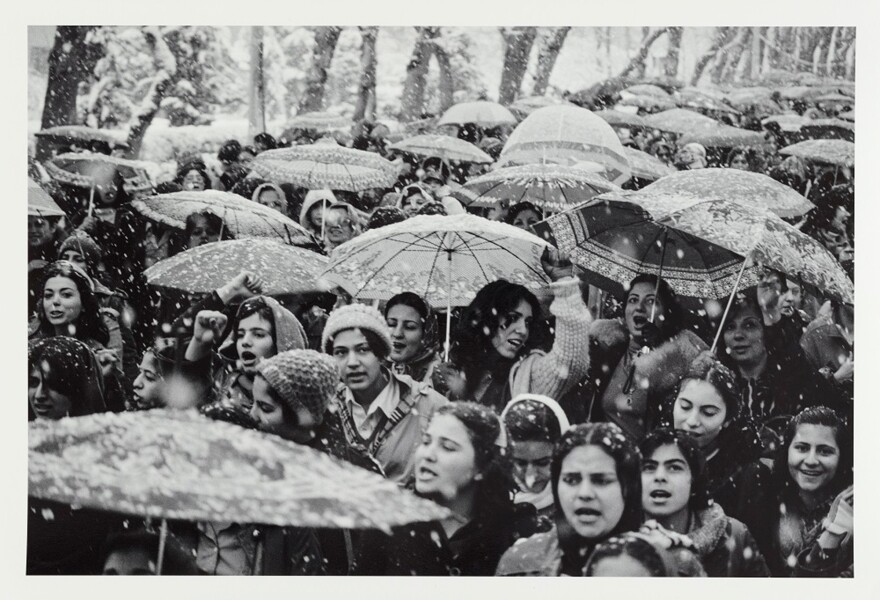
Golestan captures the swell and fervor of the crowd. "In those days, during the revolution, I was thinking, 'Whatever I see in the streets, it's my responsibility to show it to other people,' " Golestan said in an interview.
One visual stands out — a woman captured mid-speech in front of a small crowd. It's a powerful symbol of protest and defiance.
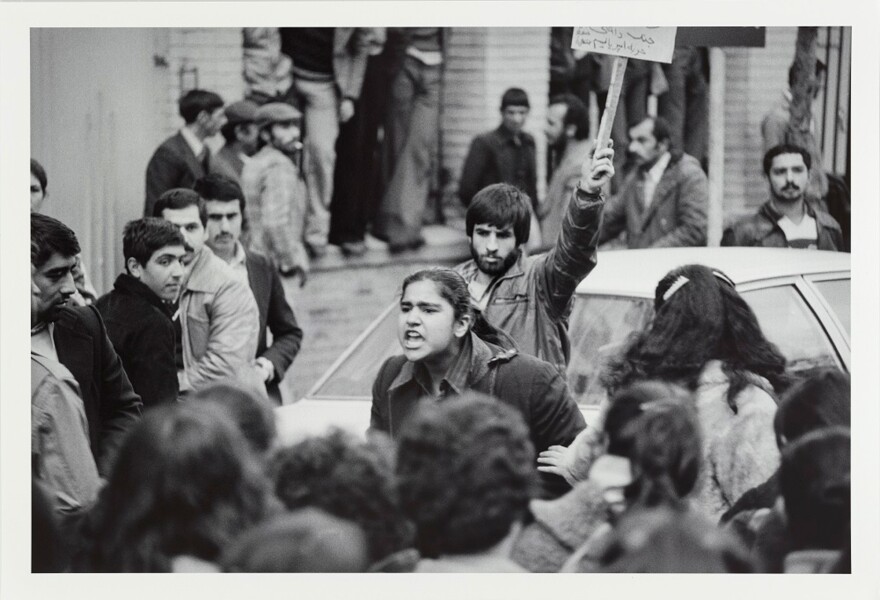
"It's Iran that I want to know and I want to take pictures of," Golestan said. "Because in a way I feel responsible for it. ... It's my own country and my own people, and since I was a child, I've seen what's going on."
Time distorts across the exhibition as photographers Nayiny and Ghadirian draw inspiration from Iran's photographic history to play with contemporary identity. Ghadirian, who currently works in Iran, offers a series of images captured in 2000 but shot in the style of 19th-century Qajar-era photography. She juxtaposes the women with simple yet highly verboten signs of the contemporary world around them. A Pepsi in hand is the smallest embrace of rebellion.
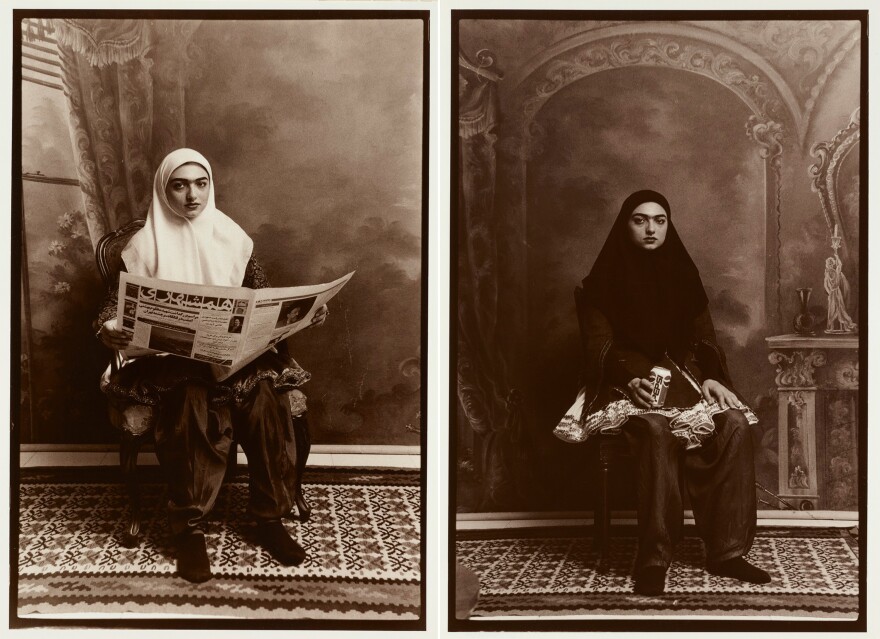
Nayiny's work may hit even closer to home — one of her main subjects is her family. In one particular sequence, the Paris-based, Parsons School-educated artist pairs portraits of her parents, taken in snapshots over their lifetimes, with some of their valued possessions. Values and ideals morph as father and mother age and adapt to the times and surroundings they live in.
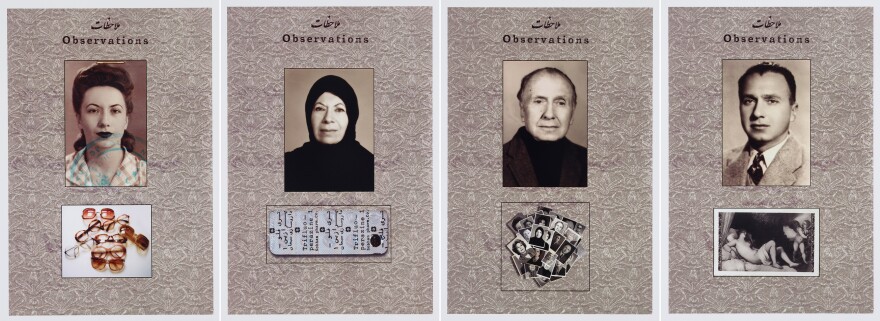
In the center of all these is a portrait of Nayiny's parents on their wedding day, shot in the carte de visite style of the 19th century and superimposed on a background of postage stamps depicting a stylized diagram of the human heart. The color stands out against the black-and-white images around it.

In another series, Tavakolian attempts to create a "family photo album" — but the images neither are of her family nor are they labeled. In one series, the haunting shot of an abandoned playground leads into the image of a young couple embracing each other as they look to their horizon. She arranges such snapshots of people and places in and around Iran to reflect the tears she observes in the fabric of Iranian society.

A woman is shown teaching her class of young girls, all clad in conservative dress, while in another photo, a young man walks through a crosswalk wearing a tie — a symbol of the West that's culturally disdained by the revolutionary government.
In Dashti's portraiture, the subjects gaze in shell shock at the lens, cut off from others around them and even their surroundings. Dashti sought to express the lasting aftereffects of the Iran-Iraq War on the people who lived through it — she grew up during the conflict, which lasted from 1980 to 1988.
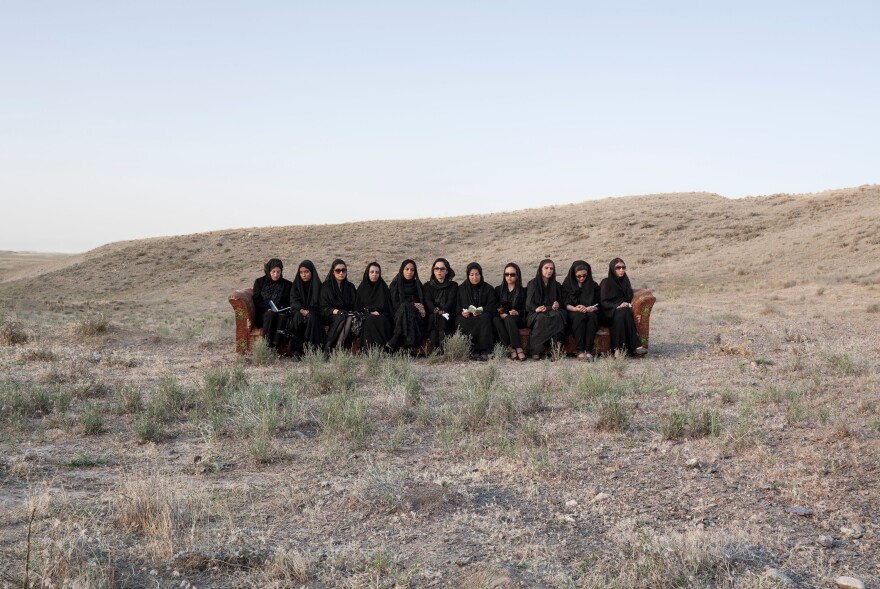
Tabrizian explores the tension between Iranians in Iran and those in exile. She photographs the exiled but chooses to set them in surroundings that leave their status ambiguous to a viewer. It's her way of expressing the pain of exile and the strange state of being "in between" two cultures.
"What each narrative implies," Tabrizian wrote in an email, "is the notion of 'waiting' — used as a metaphor to indicate both the bleakness of the situation i.e. the futility of waiting (things may never change, certainly not in a near future) — and a more esoteric reading of not having any 'home' to return to, even if things will eventually change."
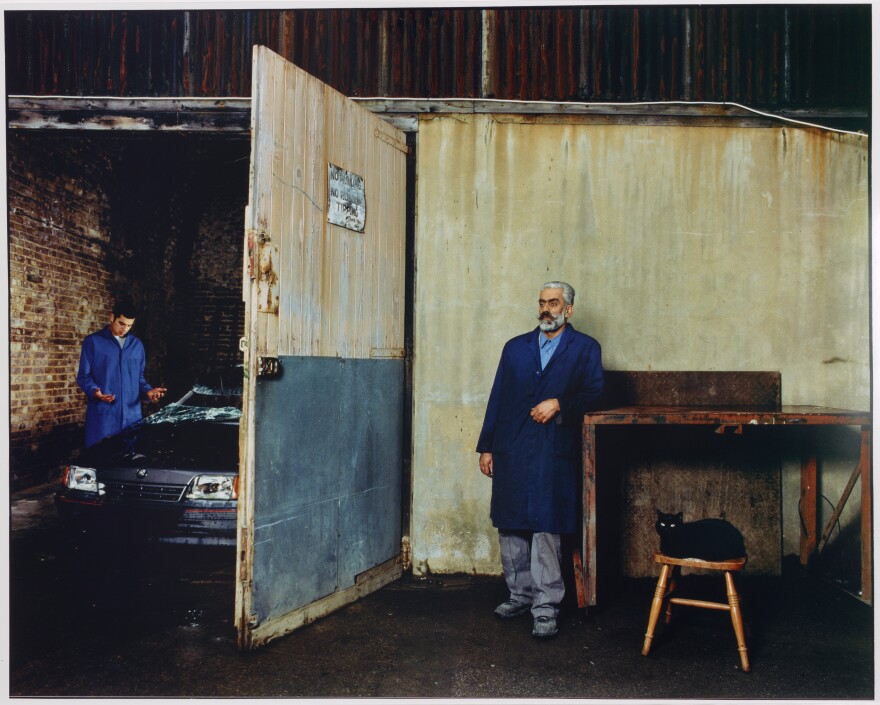
That notion of "home" is extremely powerful for the individuals in Tabrizian's photographs, but it can also be felt in many of the images in the exhibition. At some level, each photo asks a question about how ideas of home animate Iranians in Iran and abroad. Can they recognize or accept their home, or is there some greater ideal they long for?
"If we think about home as a fixed origin, we all know that doesn't exist — that's a fantasy," Tabrizian later said in a phone interview from London. "But the fantasy has a real effect. ... For me, it's not like romantic fantasy, but it's more like the fantasy which is essential to the construction of identity."
Copyright 2023 NPR. To see more, visit https://www.npr.org.


